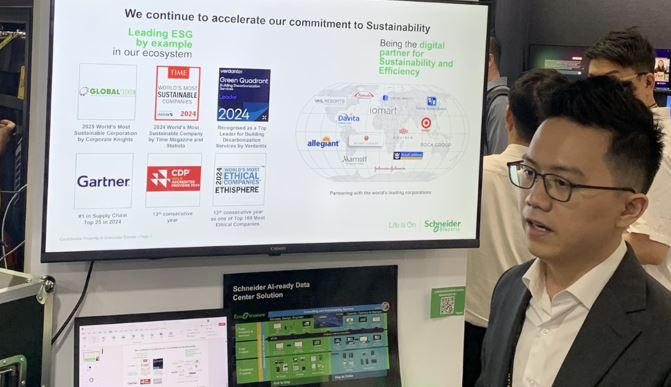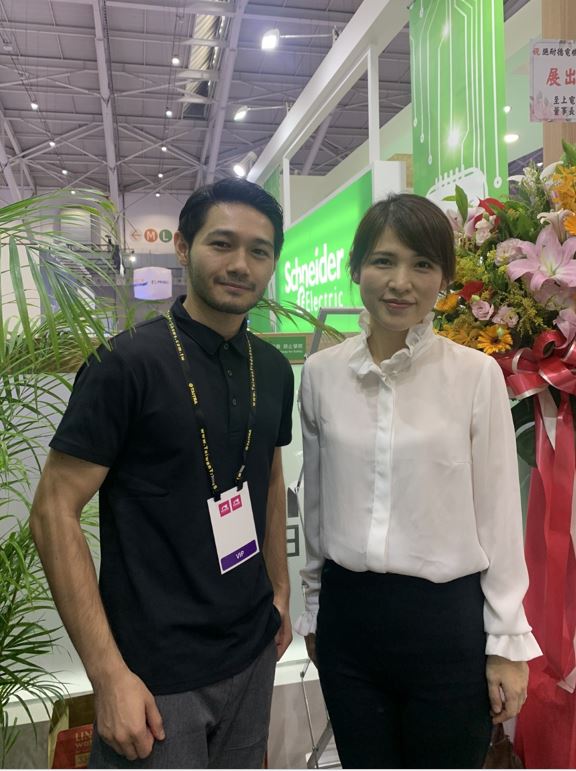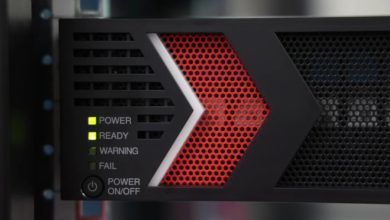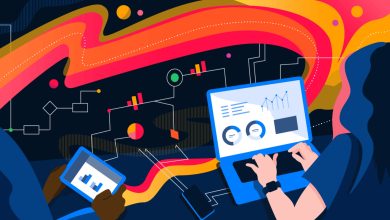Computex Taipei 2025: AI Is Power-Hungry — Schneider Electric Keeps the Lights on and the Servers Cool
Ivy Xin, Schneider Electric’s Newly Appointed VP of Secure Power, East Asia, Shares Her Thoughts to DSA in Exclusive Interview

If Computex Taipei 2025 has shown the world anything, it’s this: We are in the midst of a global era-change. What we thought was a fascinating yet fathomable wave in GenAI tech was nothing more than a small tide… and a tsunami is nearing which we need to prepare for. In the coming months, Agentic AI is going to come to consumers and markets in the form of solutions, platforms, services… and physical entities. And we need to make sure we are ready to ride that tsunami.
What does this mean? It means we need to make sure that energy/power requirements, cooling requirements and even spatial requirements to accommodate the servers, data centres or ‘AI factories’ are accounted for, planned for and fulfilled. We need to do this sustainably and within a crucial timeframe before AI’s power and computing requirements cause the industry to collapse like a snake eating itself—and with it, eat away at our environment too.
So, are there companies or people today who are aware of this? Are there people out there who don’t just understand this issue, but are planning to meet this challenge head-on? Additionally, do they have sustainable approaches to deal with such challenges?
Yes—and unsurprisingly, they are Schneider Electric, a company with a timeless reputation and a leading organisation with sustainable power and cooling solutions. We will get into the specifics of what they are doing to meet AI requirements, but their motto sums it up well: “Grid-to-chip and chip-to-chiller.” It describes their end-to-end solutions for data server power supply and cooling technology from start to finish. Such aims and reputation come about because of the talent and type of people consistently recruited by Schneider. Put simply, they strive to spread sustainable practices to every corner of the world.

DSA Interviews Schneider Electric’s New VP of Secure Power for East Asia
Ivy Xin, Schneider Electric’s newly appointed VP of Secure Power, East Asia, is no exception. At a private interview on the second level of Schneider Electric’s exhibition booth at Computex Taipei 2025, she demonstrated her commitment to spreading Schneider’s influence and aspirations for sustainable AI technology. Her responses to DSA’s questions are as follows:
What are the biggest concerns from data centre companies from Asia when they come to Schneider? Do these concerns change from country to country?
OK, so I think they have a couple of concerns when they approach us. Of course, it varies country to country… But the common concern is because they (data centre companies) are competing with other providers. It’s such a big market. The other concern is [being ready] for the future. AI demand is driving the [data centre] market demand as well. After a few years [older data centres] have become obsolete.”
…So, this is another one… More and more [people] are concerned about the power demands of AI data centres, so there’s a lot of people talking about sustainability… Some countries also have this as a requirement… For example, in Singapore if you want to build a data centre, you need to have a PUE (Power Usage Effectiveness) ratio below 1.4 at 100% IT load.
You look after the power division for East Asia. What are the most pressing issues about energy requirements for AI that you want to highlight at Computex?
Yeah, we are seeing that AI data centres now make up only probably 5–8% of the total data centre build, but we are seeing the trends that in the next three to five years, this percentage is going to increase to 15 to 20%.
If you look at AI, the power generated compared to the traditional data centre is about 10 times the consumption. So, how these data centre builders and cooling providers are able to design and rethink the facility to meet that power density, to meet that power demand is very important….

Can you touch more on Schneider’s smart buildings strategy? How you are leveraging AI in general?
For Schneider, we always talk about building for the future. So, that includes four elements: sustainability, resilience, hyper-efficiency, and being people-centric. They work hand in hand.
I think of these four, what we need the most for a smart building, is being people-centric because at the end of the day, people still need to be there and they need to feel comfortable too.
You cannot just [have] the building itself… What we are looking at for smart buildings… we want to really achieve a self-healing building. That means our vision is the building can change its energy and cooling distribution based on external environments… [For example, if] we have a temperature sensor outside, it will sense [the climate]. On a colder day, the sensor will send a signal to the building management system and the building management system can regulate the inside and make [sections of the building] warmer, and vice versa.
When it comes to sustainable energy usage, which countries in Asia are most progressive towards sustainable power supply?
What I’ve discovered so far is that from a policy level, I think Singapore did it very well because they have a lot of policies there to encourage sustainability. But of course, Singapore is a small country.
They don’t have [a lot of] renewable energy, they don’t have [a lot of] green energy, so they do a lot of partnerships with neighbouring countries like Malaysia and Indonesia to buy carbon credit… In Indonesia, I was talking to one of the chairmen of a data centre authority, so he also shared with me that even Indonesia has very good resources because they have a big landscape in the country, so they have very good geothermal advantages.
Even wind and solar power… At the end of the day, it’s also looking at nature and the resources your country has. [If] governments incentivise people and the companies to utilise that green energy, [this is what] drives the change as well.

How does Schneider aim to encourage Asian countries to adopt more sustainable power supply and management solutions?
…We need to make sure that the government authority knows that if their solutions [for] the future technologies don’t exist, then we can look at how government collaboration can come into the picture to collectively achieve this goal.
For example, they can [implement] incentives or they can come up with regulations. I think that is one important aspect—the government. At the same time, we also empower partners [when] onboarding this journey as well.
So, we have our top 1000 suppliers. We collaborate with them and help them to achieve sustainability. And we need to make sure that these top 1000 suppliers use sustainable products and then we can certify them as our top suppliers.
—————————————————————————————————————————–
As Computex Taipei 2025 makes clear, the rise of advanced AI is not just a technological revolution—it’s an infrastructural and environmental challenge. Companies like Schneider Electric are not only anticipating the demands of this AI-driven future but are actively shaping it through sustainable innovation and strategic collaboration. With thought leaders like Ivy Xin, Schneider is ensuring that as AI scales up, our power grids, cooling systems, and buildings evolve intelligently and responsibly — keeping the lights on, the servers cool, and the planet in mind.




